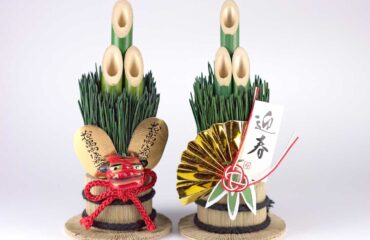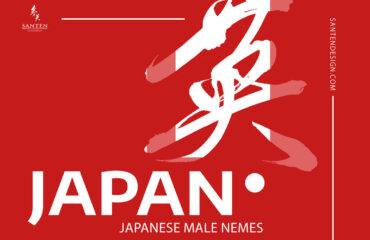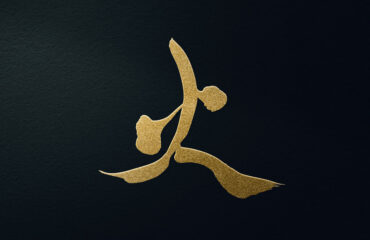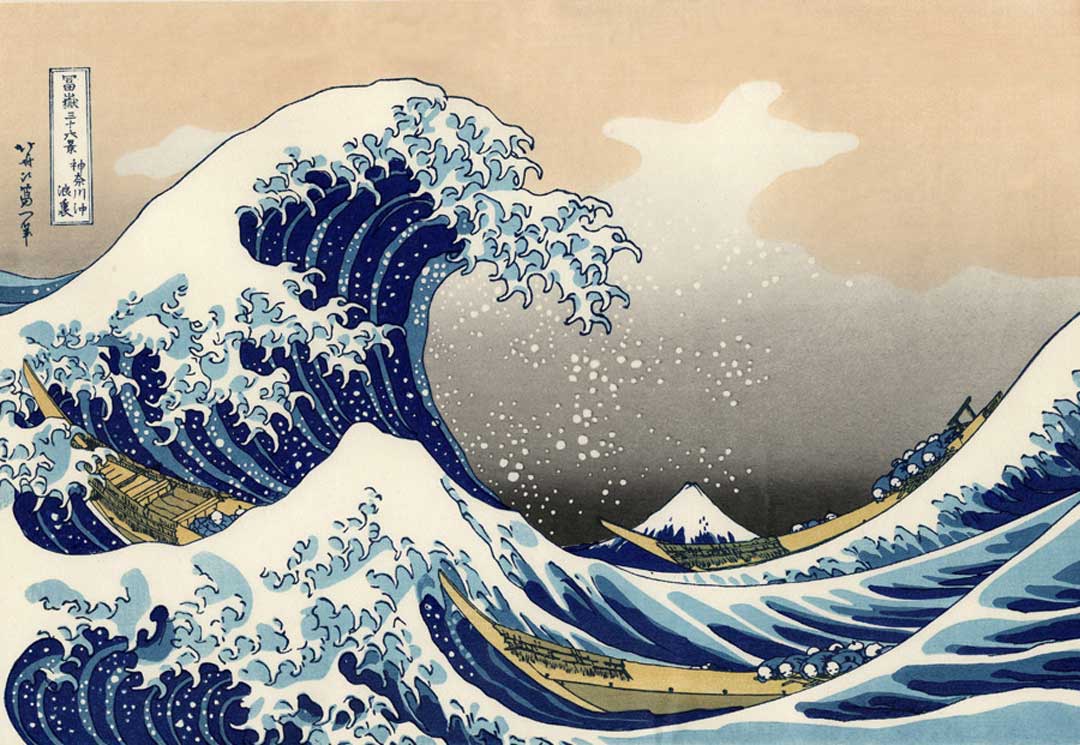
Introduction
Ukiyo-e, a quintessential art form from Japan that made a significant impact on the Western art world.
Characterized by its free and bold composition, simplicity, and vibrant coloration, this art form does more than just represent its subjects – it delivers a profound visual impact.
In this article, we delve into the details of ukiyo-e, exploring its highly-valued works, distinctive artists, and historical significance.
Developed in the Edo period in the 18th century, ukiyo-e mainly features subjects that attracted the interest of the common people.
Scenes from daily life, landscapes, popular Kabuki actors, and beautiful women were captured and enshrined in these prints.
What’s particularly interesting is the production method of ukiyo-e.
As these works are prints, once a woodblock was carved, it could be used to print numerous copies, facilitating the mass production of ukiyo-e.
This process led to a unique characteristic where there is not just one but multiple ‘original’ works.
This accessibility allowed ukiyo-e to be purchased by many common people, and it was enjoyed in a similar way we would hang posters or bromides in our rooms today.
However, not all ukiyo-e were reproducible prints. Some were unique pieces, like oil or watercolor paintings.
These are referred to as “nikuhitsu ukiyo-e,” and they generally hold a higher value, considered particularly worthy of appreciation.
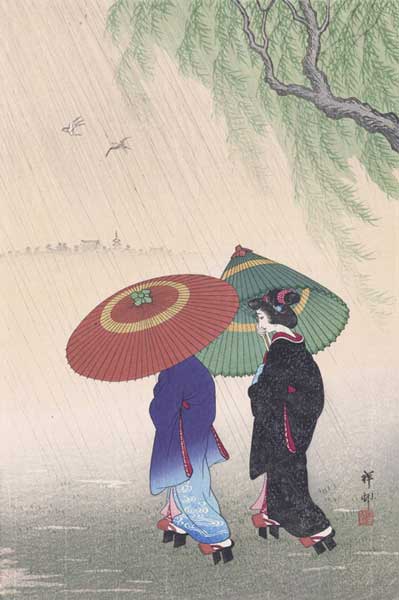
The term “ukiyo” carries the meaning of “reality” or “modern style,” and these artworks genuinely reflect the lives of common Japanese people at the time.
You could say they are a form of art that condensed the ambiance of the era.
Ukiyo-e is one of the cultures that Japan takes pride in, and its rich expressiveness and unique aesthetics continue to captivate many people.
By depicting snippets of everyday life in the past, ukiyo-e appeals to modern viewers with its beauty and emotions, even today.
Ukiyo-e serves as a kind of time capsule, encapsulating specific figures, landscapes, and the flow of time in a single piece.
Its realistic depiction and color usage are not only significant in the realm of visual arts but also serve as important cultural records. Information on common people’s lives, customs, and trends are detailedly recorded and conveyed to the future.
In the next sections, we will delve deeper into the allure of ukiyo-e, exploring its history and the features of its artists.
Let’s journey together into the beauty and depth of Japan portrayed in ukiyo-e.
Ukiyo-e: A Canvas of Life, Intrigue, and Beauty
The art of ukiyo-e is steeped in diversity, mirroring the myriad aspects of Japanese society during the Edo period.
These prints were not just artistic expressions, they were windows into the times that bore them, showcasing themes that encapsulated the essence of everyday life.
Here, we take a look at some of the primary themes that were prevalent in ukiyo-e art.
Bijinga – Portraits of Beauty
One of the earliest themes in ukiyo-e was the bijinga, portraits of beautiful women.
Initially, these prints often featured courtesans from the pleasure districts, but as the genre evolved, it also started depicting reputed beauties from around town.
Interestingly, the beautiful women painted in these prints often bore a resemblance, a nod to the public’s shared ideals of beauty.
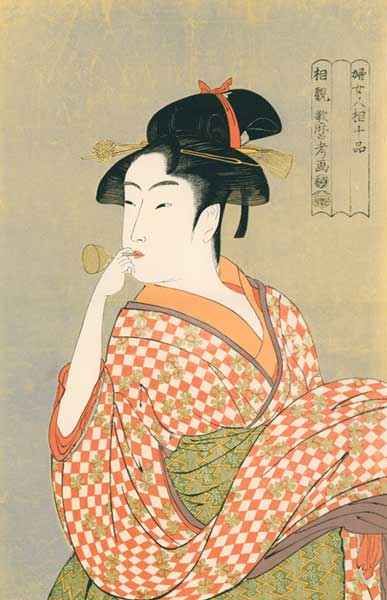
Yakusha-e – Actor Prints
Just as celebrity culture thrives today, the popular Kabuki actors of the Edo period held sway over the hearts of the common people.
Ukiyo-e celebrated these figures in yakusha-e, prints that portrayed these actors.
While initially the prints depicted an entire scene from a play, or even a view of the theatre, over time, artists began focusing on individual actors to cater to the public’s growing fascination with them.
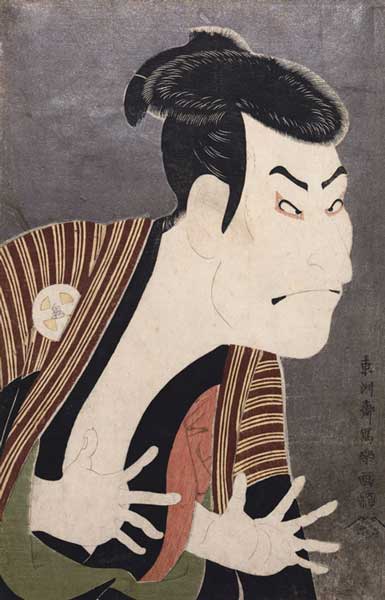
Fūkeiga – Landscape Prints and Famous Places
Travel was not an easy endeavor for the common people during the Edo period, which perhaps kindled a sense of longing and intrigue for distant lands.
Ukiyo-e artists tapped into this sentiment, producing landscape prints and images of famous places.
Works such as Katsushika Hokusai’s ‘Thirty-Six Views of Mount Fuji’ and Utagawa Hiroshige’s ‘The Fifty-Three Stations of the Tōkaidō’ offered the people a visual journey through these famed locales.
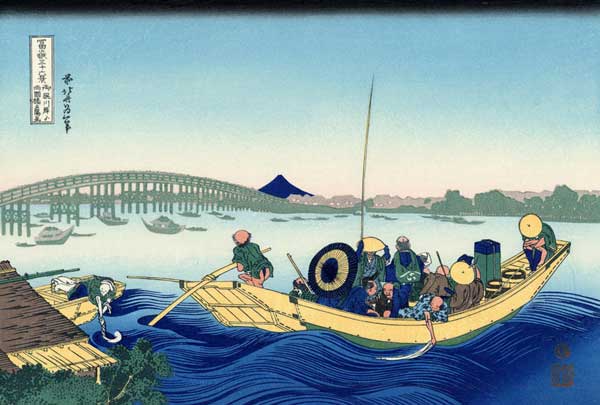
Other Themes
Beyond beauties, actors, and landscapes, ukiyo-e explored a multitude of other themes.
Sumō-e showcased sumo wrestlers, musha-e highlighted historical warriors, kachō-ga were prints of flowers, birds, and other natural elements, and shunga or abuna-e portrayed erotic scenes or semi-nude women.
There were even omocha-e, prints that were made as toys for children.
Truly, ukiyo-e offered a snapshot of every aspect of life, intrigue, and beauty in Edo-period Japan.
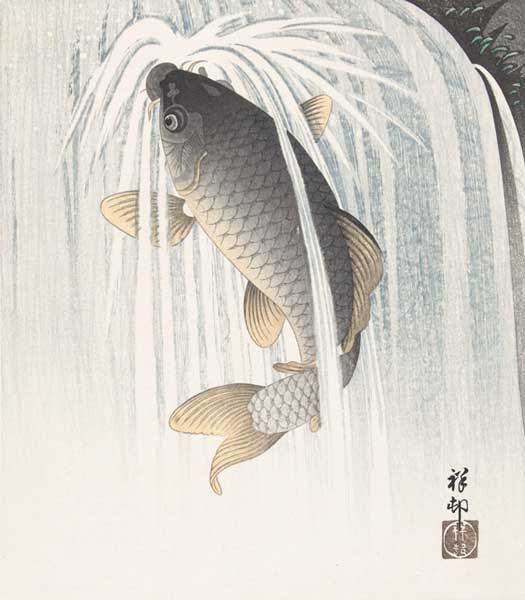
As we continue to explore ukiyo-e, we find that each print, each theme, and each stroke of the artist’s hand encapsulates a slice of history.
They not only depict life as it was but also project the hopes, dreams, and desires of the people of the time.
Stay tuned as we delve deeper into the fascinating world of ukiyo-e.
The Process of Creating Ukiyo-e
In this article, we will delve into the steps taken to complete a Ukiyo-e piece, focusing on the roles and collaboration of the three craftsmen involved: the painter, the carver, and the printer.
1. Drafting the Sketch: The Painter’s Realm
The inception of a Ukiyo-e piece begins with a sketch drawn by a painter.
The painter outlines the image in ink, specifying colors and details of the carving and printing methods.
Instructions for creating a type of printing block called a “Sumiban” are also given at this stage.
The painter revisits the sketch numerous times, making revisions until it is perfect.
2. Carving the Blocks: The Artistry of the Carver
Next up are the carvers. Carvers faithfully follow the painter’s sketch, engraving it into the printing blocks.
They begin with a Sumiban for printing the black outline, and subsequently carve separate blocks for each color to be printed.
Since a block is needed for each color, a team of carvers works on this process.
Skilled carvers handle the most intricate parts, while novices take on simpler sections.
3. Printing onto Paper: The Craft of the Printer
The final step involves printers, under the guidance of the painter, applying ink to each block and impressing it onto the paper.
Printers refer to a mark, known as the “kento”, drawn on the blocks to ensure colors do not shift out of place.
The process of printing follows the principle of transitioning “from light to dark colors” and “from smaller to larger areas”.
Furthermore, printers utilize a technique called gradation, subtly adjusting the amount of ink and the speed of printing to give the image depth and realism.
This sums up the process of creating Ukiyo-e.
Through the collaborative efforts and attention to detail by the painter, carver, and printer, a single Ukiyo-e piece comes to life.
The History of Ukiyo-e
In this article, let’s delve into the history of its evolution, from its origins to the innovation of multicolor printing.
The Origins and Founders of Ukiyo-e
The roots of Ukiyo-e can be traced back to the early Edo period with Iwasa Matabei, a Yamato-e painter and the son of Araki Murashige, a vassal of Oda Nobunaga.
Following Matabei, Hishikawa Moronobu, who inherited and refined Matabei’s artistic style, is widely acknowledged as the founder of Ukiyo-e printmaking.
Moronobu was active from 1658 to 1673 and is known for works like “The Beauty Looking Back,” earning him the title “The Founder of Beauty Painting.”
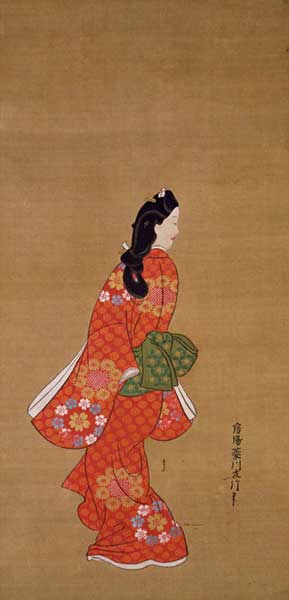
The Types of Ukiyo-e and the Development of Multicolor Printing
Originally, Ukiyo-e was printed in monochrome ink and was known as “Sumizuri-e.” Subsequently, a technique was developed to add color by hand to the monochrome prints.
These colored Ukiyo-e were termed as “Tan-e” or “Beni-e,” depending on the coloring method.
By the early 1700s, these hand-colored techniques could incorporate several colors.
However, hand coloring was not suitable for mass production, leading to the invention of “Benizuri-e,” where the color was also printed.
This method increased the color count to three or four but still had limitations in terms of expression, as there was no provision for gradation or shading.
During this period, the roles of painters, carvers, and printers began to be differentiated, and the production of Ukiyo-e became a division of labor.
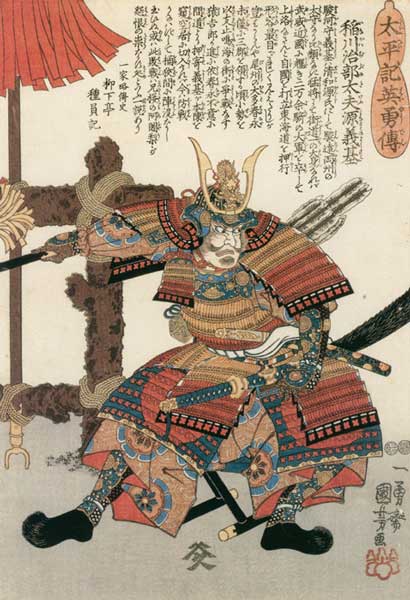
The Birth of Multicolor Ukiyo-e, “Nishiki-e”
With the advancement in production techniques, vibrant multicolor printed Ukiyo-e, known as “Nishiki-e,” was born.
This breakthrough became possible with the development of a technique called “kento” to align different blocks.
By utilizing “kento,” it became possible to print delicately without color misalignment.
The perfection of multicolor printing was achieved by “Suzuki Harunobu.”
His Ukiyo-e, with its rich colors and attention to detail, evoked the beauty of Chinese brocade fabric, leading to his recognition as the “Founder of Nishiki-e.”
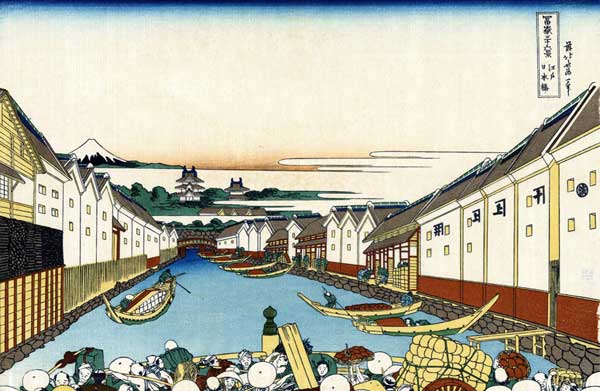
The Impact of Ukiyo-e on the Overseas Art Scene
Ukiyo-e’s Debut in Europe
Ukiyo-e, a unique art form from Japan, made waves in Europe in the 19th century, particularly during the 1867 Paris Expo where Japan made its first official appearance represented by the Edo Shogunate, the Satsuma clan, and the Saga clan.
It was in this expo that the Ukiyo-e art form started gaining immense popularity, contributing to the rise of the Japonism boom.
Ukiyo-e: A Revolutionary Art Form
Ukiyo-e was revolutionary.
It was bold, simple, and innovative in expression, embodying the delicate and precise craftsmanship unique to the Japanese culture.
Europeans, particularly artists, were captivated by these artworks and a frenzy for Ukiyo-e collecting emerged, leading to a mass exportation of these artworks from Japan.
Ukiyo-e and Its Influence on Impressionist Artists
The influence of Ukiyo-e on artists such as Van Gogh, Renoir, Gauguin, Monet, Manet, Degas, and Toulouse-Lautrec, who later became world-renowned as the Impressionists, was profound.
Until then, European paintings were mainly focused on religious themes, wars, and portraits of nobility, rendered in a somber and heavily realistic style.
In contrast, Ukiyo-e presented scenes of everyday life of common people in a bold, free, and simplified style, free from the constraints of realism, and depicted in bright colors.
This was a surprise and a revelation for European artists and citizens alike.
Ukiyo-e: A Catalyst for Change in European Painting
Affected by the influence of Ukiyo-e, these artists began to break away from the dominant realism of their time.
Thus, it is often said that “Ukiyo-e influenced the Impressionist painters”, but more accurately, it should be stated that “Ukiyo-e influenced the famous painters who later became Impressionists”.
Ukiyo-e’s impact was not just about stimulating European painters; it was so significant that it changed the course of European painting itself.
Recognizing the transformative power of Ukiyo-e on the overseas art scene underlines the magnitude and reach of its influence.
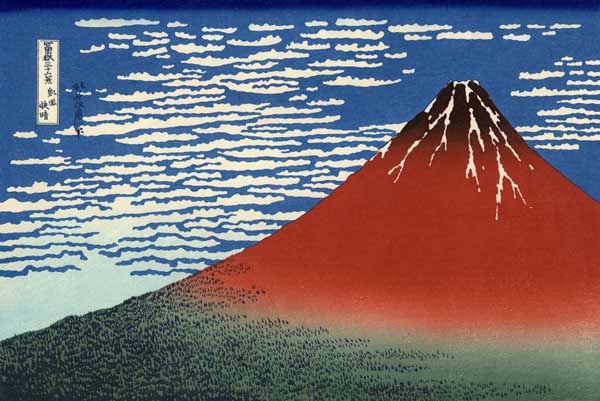
Conclusion
Ukiyo-e is a form of Japanese art that has deeply influenced the entirety of art history with its artistic quality and advanced techniques.
It presents Japanese values through a unique visual language, while also paving the way for Western artists to explore new forms of expression.
The creation of ukiyo-e requires the collaborative work of painters, carvers, and printers, and the beauty and depth that result from their combined efforts continue to captivate people around the world today.
Other Introduction
Tradition of Japanese Tea Ceremony – Sado

